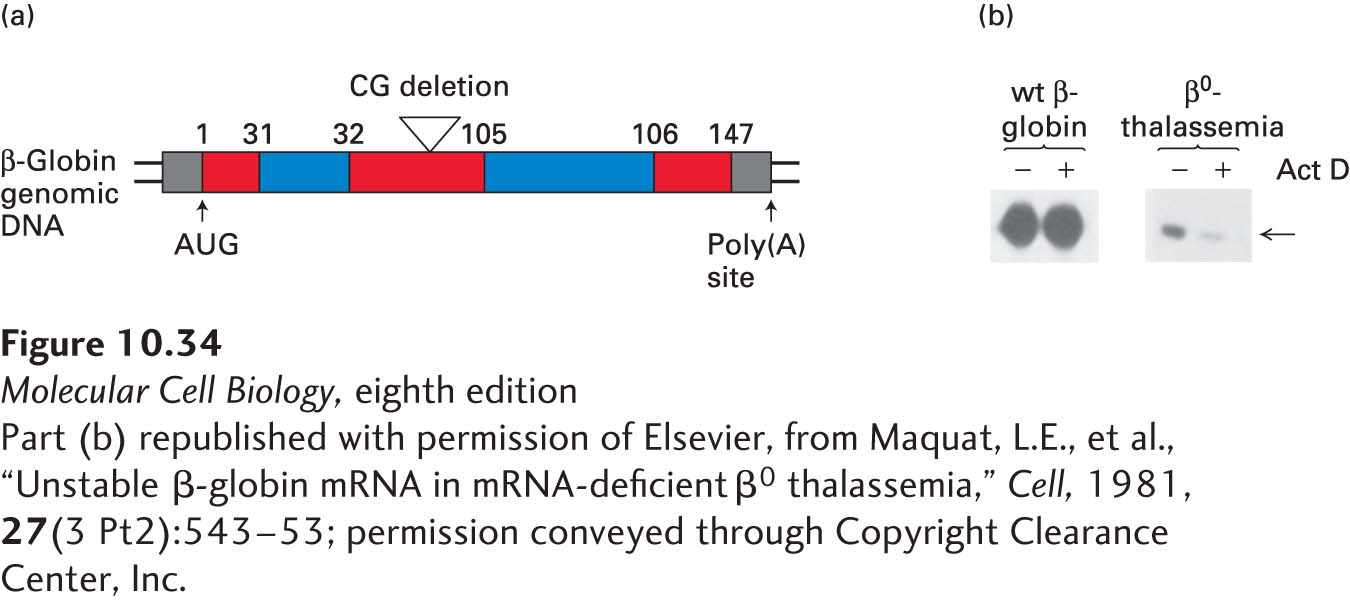
FIGURE 10- e- e- e- n- n- d- 1- d- d-
[Part (b) republished with permission of Elsevier, from Maquat, L.E., et al., “Unstable β-globin mRNA in mRNA- 3–